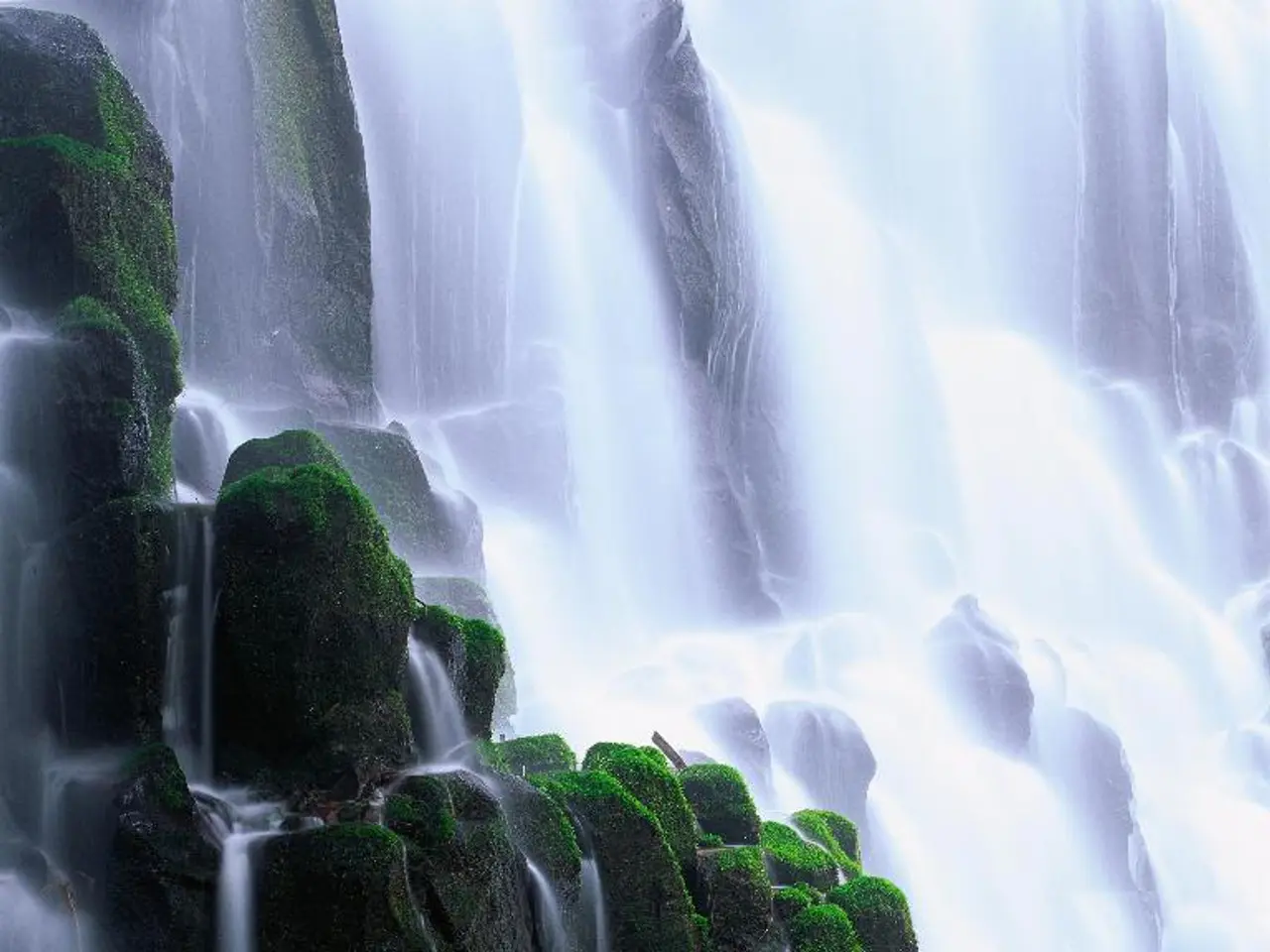Top Terrarium Moss Picks: Rich Varieties and Specialist Recommendations
Terrarium moss is the lush, verdant foundation of a vibrant enclosed ecosystem, adding depth, texture, and that extra bit of pizzazz to your creation. Whether you're after dynamic textures or pristine mossy mounds, there's a perfect moss for you. Let's dive into the world of terrarium moss, showing you the best picks, how to grow it, and even sharing a few choice words about our favorites.
So, without further ado, let's get started!
Our platform is reader-supported. When you purchase through links on our site, we may earn an affiliate commission (no extra cost to you). 💜
Key Types of Terrarium Moss
To make the most of your terrarium, you need to know your moss. With thousands of species to choose from, let's narrow it down by looking at these three critical factors: growth patterns, environmental suitability, and planting type.
Growth Patterns
Moss is categorized into two primary growth patterns: Acrocarpous and Pleurocarpous. While the names sound like they belong in a Dungeons & Dragons tournament, it's the growth patterns that matter to us.
Acrocarpous grows in clumps. These cute little grassy mounds offer lots of shape and texture, making them perfect for creating dynamic landscapes (think rolling hills or grassy hummocks). They hold together well so you can sculpt a landscape by tearing off appropriately sized chunks and putting them together like a jigsaw.
Pleurocarpous moss, on the other hand, grows in sheets. Also known simply as Sheet Moss, these are best for covering areas with a natural moss carpet. They're great for covering the soil layer and giving that important earthy, woodland look. Some mosses can even look like larger plants or tiny trees, like Fern Moss, and can be used to add a sense of scale.
Environmental Suitability
Like any other plant, different types of moss will be suited to different environments. Terrarium enthusiasts tend to focus on species that thrive in the warm and humid conditions of a terrarium, but don't think the options are limited! Moss is adaptable, so feel free to try moss from different climates to see what works for your setup.
Planting Type
Finally, we have how the moss likes to be planted. Just like in nature, moss grows anywhere and everywhere, but there are two main types: terrestrial and epiphytic.
- Terrestrial mosses can loosely attach using little root-like structures called rhizoids, growing on top of soil/substrate.
- Epiphytic mosses, on the other hand, love to grow on hard surfaces like rocks, logs, and trees.
The Best Moss for Terrariums
With so many great contenders, your ideal moss depends on the particulars of your terrarium. Here's a list of our favorites to get you started:
Clumpy Mosses (Acrocarpous)
- Cushion Moss/Bun Moss (Leucobryum glaucum) is a wonderful compact moss that I love to work with. Its versatile nature means it can be used in various ways, from rolling hills to accent pieces.
- Mood Moss (Dicranum scoparium) is another popular option. It grows in dense clumps and its wavy leaf structure resembles windswept grasslands, making it a unique choice for adding texture to your terrarium.
Carpeting Mosses (Pleurocarpous)
- Sheet Moss (Hypnum) is a low-growing tropical moss that provides a uniform carpet layer, perfect for creating a lush, smooth ground cover.
- Fern Moss (Thuidium delicatulum) offers lots of texture with its long, fern-like leaves. I love the warm colors and woodland vibes this moss brings to any terrarium.
Other Mosses
- Sphagnum Moss doesn't quite fit into the list above, but it's a mainstay in modern terrariums. Perhaps best known as a medium to grow other mosses and terrarium plants, it's a versatile moss that deserves a spot in your terrarium toolkit.
- Java Moss (Taxiphyllum barbieri) is equally at home on land and water, making it a great choice for paludariums or vivariums. Java Moss truly shines when attached epiphytically to rocks and wood, helping bring the upper areas of a terrarium to life.
How to Grow Moss in a Terrarium
Moss is the most versatile terrarium plant, offering endless opportunities for creating stunning visual effects. Follow these simple principles to make the most of your mossy masterpiece:
- During the first 3 to 4 weeks, the moss goes through a critical acclimatization period. Keep it hydrated throughout this time to give it the best chance to adapt.
- Hydrate moss before use by soaking it in clean water. It removes debris and hydrates the moss nicely, setting it up for success.
- Clumpy mosses tend to stay compact, while sheet mosses can be torn up and placed evenly around a terrarium. Sculpt your landscape using clumpy moss, or use sheet moss to create a seamless carpet effect.
- For a creative touch, you can use superglue to stick moss to surfaces or tie it with fishing line to attach it to your terrarium elements.
What's Your Favorite Terrarium Moss?
We've shared some of our favorites, but there are countless other moss species that could make excellent additions to your terrarium. Have you discovered any mosses that weren't mentioned here? Share your finds in the comments below!
Already got your moss? Why not check out the terrarium supplies available on our online store?
Enrichment Data:
The best and most suitable types of moss for terrariums primarily include Cushion Moss, Haircap Moss, Java Moss, and Sheet Moss, each offering distinct characteristics ideal for different terrarium environments and visual effects.
Best Types of Moss for Terrariums
- Cushion Moss: Thrives in closed terrariums with humidity between 75–90% RH and light levels around 100–150 µmol·m⁻²·s⁻¹. It serves well as an accent moss due to its compact and lush cushion-like appearance, adding a natural carpet effect.
- Haircap Moss (Polytrichum commune): Known for vertical height (2–5 cm) and fine hair-tipped stalks, it adds dramatic texture and dimension. It requires high humidity (80–95% RH) and moderate light (100–150 µmol·m⁻²·s⁻¹), making it excellent for closed terrariums where it creates upright visual interest and contrast against flatter moss types.
- Java Moss (Taxiphyllum barbieri): Highly versatile, suitable for both open and closed terrariums and even fully aquatic setups. It tolerates low light conditions (20–100 µmol·m⁻²·s⁻¹) and moderate humidity (60–90% RH). Java Moss can be used to create moss walls, drape as hanging veils, carpet surfaces, or attach to driftwood and stones for a naturalistic aquatic forest look.
- Sheet Moss: Best suited to open terrariums with moderate light (20–120 µmol·m²·s⁻¹) and humidity (60–80% RH). It provides a uniform carpet layer that covers substrate smoothly, perfect for creating a lush, seamless green ground cover.
- Sphagnum Moss: While often used as a substrate layer rather than a decorative surface moss, sphagnum moss excels at moisture retention and aeration, aiding the health of the terrarium environment. It helps reduce mold risk and maintain appropriate humidity and drainage, especially in bio-active terrariums.
How to Use Moss for Maximum Visual Effect
- Layer Different Moss Types: Combine the height and texture of Haircap Moss with the smooth carpet of Cushion or Sheet Moss to create visual depth and contrast in your terrarium.
- Create Moss Walls and Veils with Java Moss: Attach Java Moss to vertical surfaces like driftwood, rocks, or mesh backgrounds to simulate hanging moss or mini "forests," enhancing the three-dimensional effect.
- Use Carpet Moss for Ground Cover: Plant Cushion or Sheet Moss densely across the substrate to form a lush, natural carpet that unifies the design.
- Incorporate Moss Around Plants and Decorations: Accentuate plant bases or decorative stones with moss to blend elements and provide a naturalistic look.
- Maintain Proper Humidity and Light: Match the moss species to the terrarium’s humidity and light conditions to keep moss healthy and vibrant, ensuring dense growth and rich green color.
- Add Bio-Active Elements: Introducing springtails and isopods helps maintain moss health by reducing mold and breaking down organic debris, keeping the terrarium ecosystem balanced.
By selecting mosses that suit your terrarium’s environment and creatively layering them for texture, height, and coverage, you can achieve a dynamic and visually striking terrarium design that thrives over time.
In the realm of terrariums, certain mosses stand out as ideal choices for creating captivating homemade green sanctuaries. For example, Cushion Moss, also known as Bun Moss (Leucobryum glaucum), is a versatile moss suitable for creating dynamic landscapes with its compact yet lush appearance, while Haircap Moss (Polytrichum commune) adds stunning vertical height and fine, hair-tipped stalks to your terrarium.
On the other hand, Sheet Moss provides a uniform carpet layer that beautifully covers substrate for a lush, seamless ground cover. Java Moss, known for its versatility, can adapt to both open and closed terrariums, offering options for creating moss walls, draping hanging veils, carpeting surfaces, or attaching to driftwood and stones—all essential elements to achieve a naturalistic terrarium look.







